Glossary: Hairs and Scales
Hairs, glands and scales together constitute the surface ornamentation or indument of a structure (rhizome, stipe, rachis, costa, lamina, indusium). With a lack of all of these the structure is called glabrous. If the hair or scale falls off early in life, the surface or structure is called glabrescent and the hair or scale deciduous. The specific type of indument is characteristic, sometimes diagnostic, for genera or species.
What is the difference between a hair and a scale? One cell. Hairs are one cell in width or depth. Narrow scales sometimes cannot be differentiated from hairs with the naked eye, but you can usually do so with a hand lens.
Hairs
A number of technical terms are used to describe needle-like hairs, among them| acicular | ciliform | setiform |
|---|---|---|
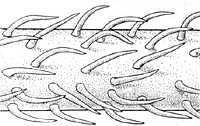 |
 |
 |
| hirsute | lanate | pilose | pubescent |
|---|---|---|---|
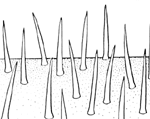 |
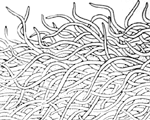 |
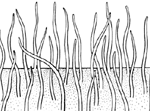 |
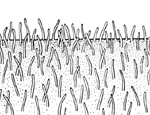 |
| sericeous | strigose | tomentose | villous |
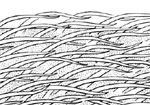 |
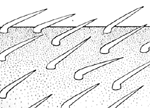 |
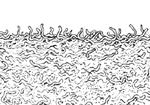 |
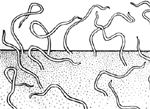 |
Glands
This capitate hair with an enlarged tip is also a gland.
When the gland is not at the tip of a hair, but sitting right on the surface, it is sessile.
Scales
Most scales are described by their shapes, for example, linear or ovate, but there are special types of scales too:
| bullate | clathrate | denticulate | fibrillose |
|---|---|---|---|
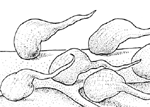 |
 |
 |
 |
| (stained-glass effect) |
Another scale type, peltate, a round scale attached near the center, is found in Polypodium polypodioides.
All the line drawings here are from A Modern Multilingual Glossary for Taxonomic Pteridology, David B. Lellinger, American Fern Society, 2002, with permission.